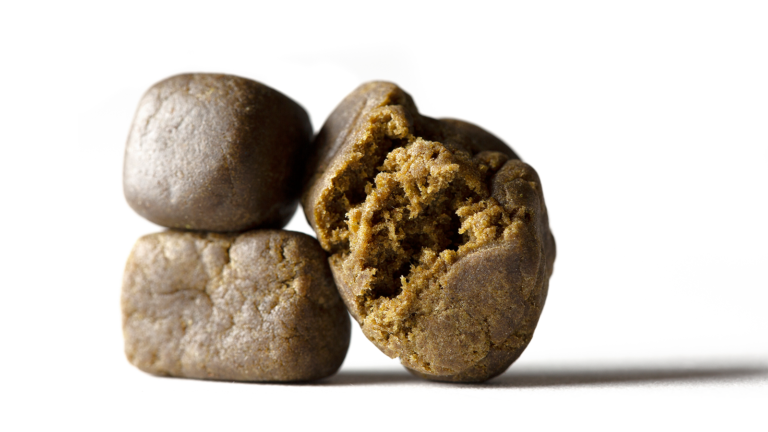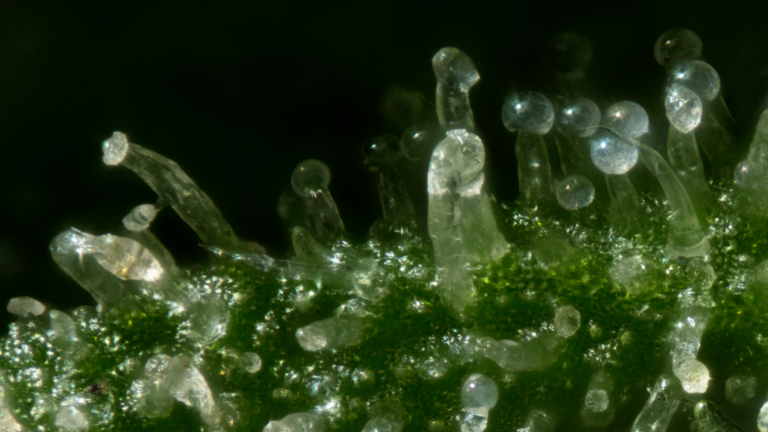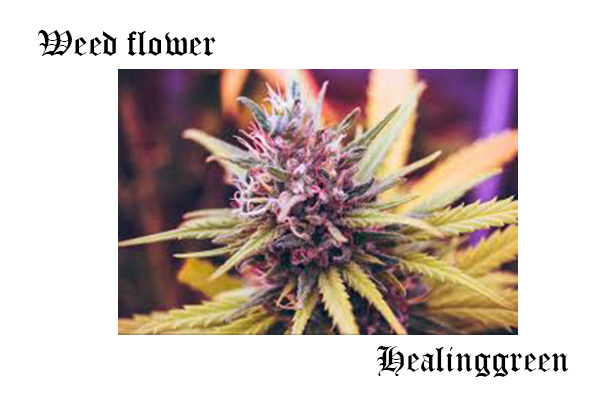Maybe you’re thinking about growing your very own weed at home, but you have about a thousand questions, such as when do cannabis plants flower? Well, in this article we’re going to try and give as clear an answer as possible to that delicate question. Cannabis plants have various different phases they must go through until their flowers can be harvested, dried, cured and smoked. During each phase your plants will have a certain set of requirements such as nutrients or the amount of light needed.
Cannabis plants have four main phases, which are germination, vegetative growth, flowering or bloom and the fattening period. Today we’re going to talk specifically about the flowering period; why it happens and when it happens.
The cannabis plant has several structures, many of which we can find on any ordinary flowering plant species. Cannabis grows on long skinny stems with its large, iconic fan leaves extending out from areas called nodes.
Cannabis really stands out in its flowers—or buds—where unique and intricate formations occur: fiery orange hairs, sugary crystals, and chunky buds enveloped by tiny leaves.
A general term that refers to the smokable, trichome-covered part of a female cannabis plant. Flower is the most popular form of cannabis due to its versatility, offering numerous consumption methods, such as being smoked using a pipe or bong, or by rolling it in a joint or blunt.
“This Sour Diesel flower is the dankest sticky I’ve ever handled.”
“The dispensary down the street is known for its fire flower: each nug feels like a sticky, heaven-sent cloud in your palm.”
Common Forms of Flower

As noted above, cannabis Flower refers to the smokable section of the cannabis plant, also known as nuggets, nugs, or bud. In the common parlance of combusting cannabis, users grind Flower before smoking, packing, or decarbing it as ground cannabis burns more evenly and can be much more easily manipulated, be it in a bowl or measured in a cup and poured onto a baking sheet.
Cannabis that is purchased at a dispensary is known as loose Flower, that is, flowers purchased on their own are loose from the cannabis plant itself. Users aren’t purchasing stems, leaves, or seeds — just Flower.
Prerolls

The other form of non-combusted Flower available for purchase comes in cylindrical or conelike marijuana cigarettes known as joints, prerolls or blunts. With these products, producers gather ground cannabis and roll it into prerolls to offer consumers a high-quality combusting experience with the utmost convenience — the grinding, rolling, packing, and wrapping have been expertly done for you. The quality of prerolls can vary, but as cannabis competition widens, less and less will be stuffed with low-quality bud, stems, and leaves. But as with any product, the scale of quality ranges from terrible to mind-bending. Some prerolls are packed with top-quality cannabis, shot through with grade-A Wax, dipped in potent cannabis oil, and sprinkled with kief. Your mileage will vary.
What’s the flowering period?
The flowering period, or bloom as some people call it, is what happens when your plants begin to produce aromatic flowers which, with the right care, can later be harvested, dried, cured and smoked. Your plants will still grow a bit once they’ve begun the flowering stage, although they will eventually stop in order to focus all of their energy on producing large, resinous flowers. The flowering period tends to last around 7-9 weeks on average, although many sativa strains take quite a bit longer.
When do Cannabis Plants Flower?
Cannabis plants usually begin the flowering process when there’s a change in the amount of light and dark they receive. Many people believe that it’s due to them receiving less light when, in reality, it happens because they begin receiving more darkness.
In order to flower correctly, seasonal cannabis plants need at least 12 uninterrupted hours of darkness. During the day, your plants are photosynthesizing, turning light into energy and releasing oxygen – this is just general knowledge. When in total darkness, cannabis plants begin producing a hormone called florigen, which is in charge of starting the flowering period. If your cannabis plants begin receiving more hours of darkness, they will produce more florigen which forces them to flower.
Indoors and Outdoors
If you’ve ever growing cannabis indoors before, then you know that your plants will begin the flowering process once you switch the light period to 12h of light and 12h of darkness. The main difference between indoor and outdoor flowering is that outdoor plants will begin to flower according to the change in season, once the days get shorter and the nights get longer.
When the flowering period starts, your plants shouldn’t begin shooting off flowers straight away. They’ll keep growing for a couple of weeks, depending on the strain, so that they can make a smooth transition to the flowering period. This is technically called the pre-flowering period. Some plants can grow to double the size during this period if they haven’t grown much, which is something you’ll need to keep in mind when growing indoors.
Every strain has their own unique flowering process. Generally, seasonal strains follow the same pattern, although they can vary in as far as flowering times, pre-flowering times etc.
What happens if the dark cycle is interrupted?
Cannabis plants are living beings and they like their routines because any variation can easily stress them out. So, what would happen if you interrupted your plants’ dark cycle? Well, you’d stress your plant out quite a lot and it might end up revegging, which means that it reverts to the growth period and it’ll stop flowering because it’s stopped producing florigen.
In more extreme cases, your plant might actually end up becoming a hermaphrodite plant, which means that it’ll produce both male and female flowers. The male flowers will then pollinate the female flowers, leaving your buds full of seeds. If this happens and you manage to catch it fast enough, you can simply remove the male flowers and hope that it does its best.
The Exception: Autoflowering Plants
When it comes to autoflowering plants, they don’t flower when it comes to the quantity of light or Darkness that they get. Instead, autoflowering plants begin to bloom depending on the amount of time they’ve been growing for. Autos can flower while being given many more hours of light than dark, and indoors you can set them at 18h of light or more if you want. Autoflowering plants generally take 4-6 weeks to begin flowering. They can finish their full cycle in just 10 total weeks from germination to harvest, although some autoflowering strains may take a little longer.
